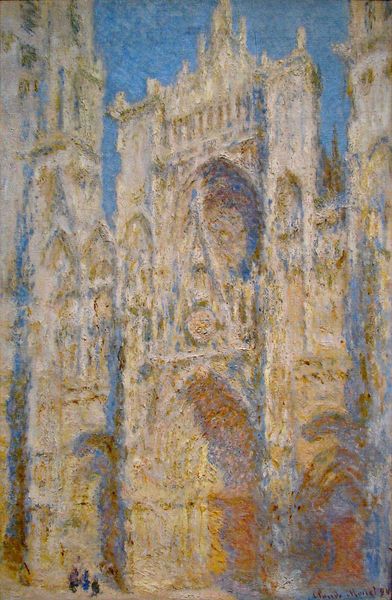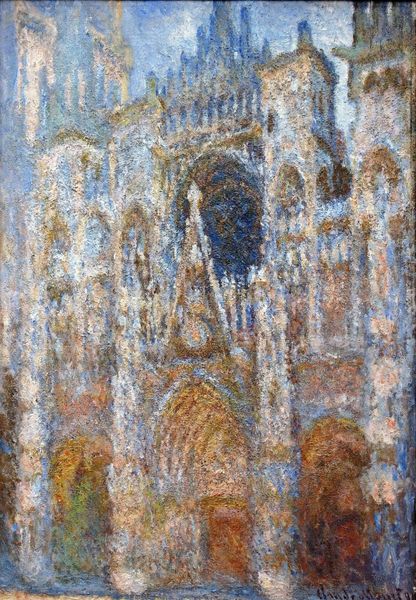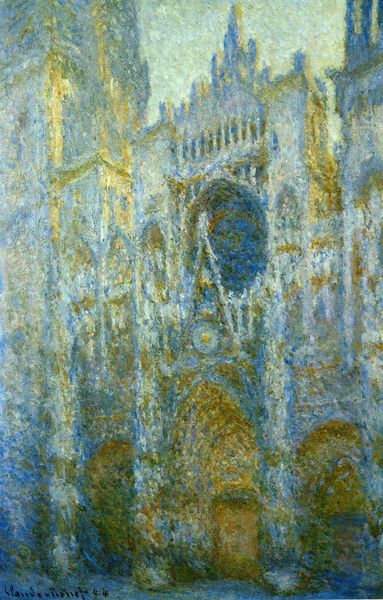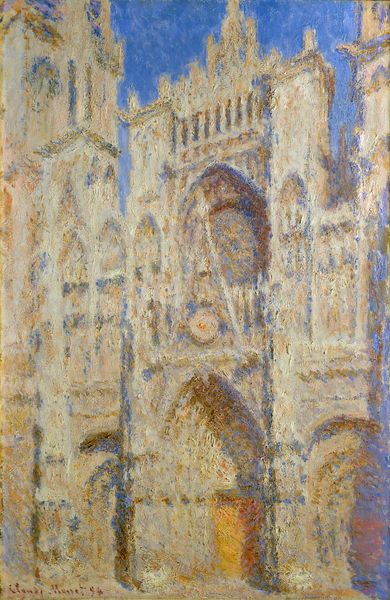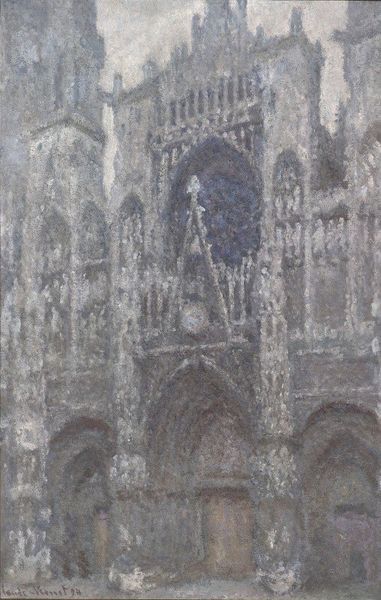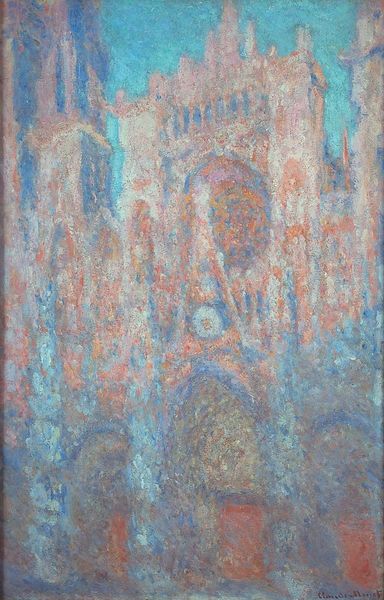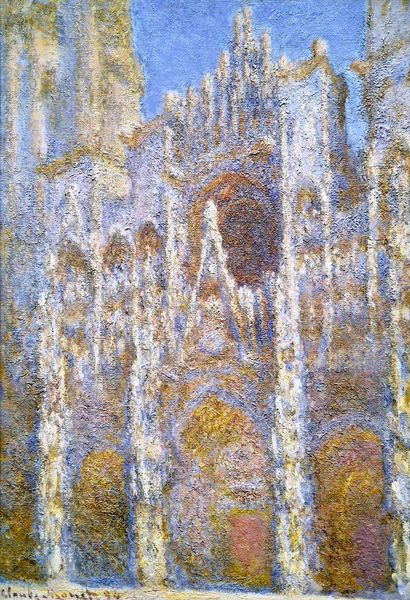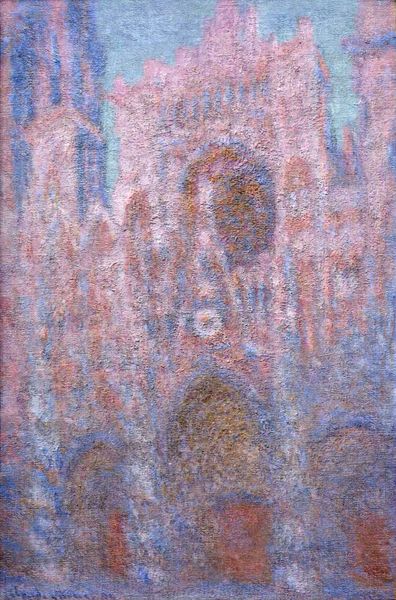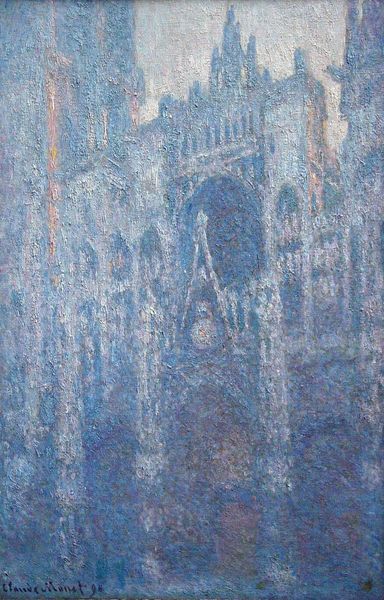
Copyright: Public domain
Editor: Here we have Claude Monet's "Rouen Cathedral 01," painted in 1894 using oil paint. It's quite an imposing structure, dominating the canvas, and almost dissolving into light. What do you see in this piece? Curator: I see the embodiment of time and memory. The Cathedral itself is more than stone; it's a vessel carrying centuries of spiritual and cultural weight. Notice how Monet captures not the object itself, but the *impression* of light playing upon it. What emotional response does the architectural geometric form provoke? Editor: Well, there's something about the way the light catches the arches that gives a feeling of serenity, almost awe, despite the lack of sharp detail. Curator: Precisely. Light, in many cultures, is symbolic of enlightenment, divinity, knowledge. The arch, a recurring motif in religious architecture, suggests both entry and protection – a gateway to the sacred. How does Monet use the "arch" in this cityscape to make a comment on spirituality? Editor: It seems to lose its solid form, almost becoming ethereal, as if the building is dissolving. I’d initially thought that dissolving was merely a consequence of his technique! Curator: Indeed! But this apparent dissolution speaks volumes. The instability of the impression belies the eternal quality ascribed to faith and tradition, which may mean they are in conflict, which adds a layer of psychological intrigue. What might Monet be suggesting about the enduring nature of belief versus the transient nature of perception? Editor: That’s a much more complex relationship than I initially recognized! It makes me see how even fleeting brushstrokes can hold profound cultural significance. Curator: Exactly. And hopefully the next time that you look at an impressionistic work, or see the repetition of any image, you think about all that underlies what you’re seeing on the surface.
Comments
No comments
Be the first to comment and join the conversation on the ultimate creative platform.

